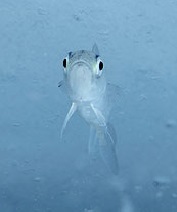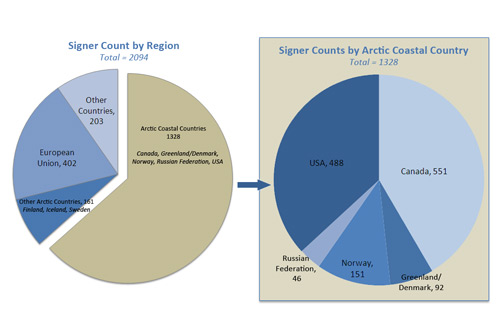More than 2,000 Scientists Worldwide Urge Protection of Central Arctic Ocean Fisheries
More than 2,000 scientists from 67 countries urged Arctic leaders, in an open letter released today by the Pew Environment Group, to develop an international fisheries accord that would protect the unregulated waters of the Central Arctic Ocean. New maps show that the loss of permanent sea ice has opened up as much as 40 percent of this pristine region during recent summers, making industrial fishing viable for the first time.
accord that would protect the unregulated waters of the Central Arctic Ocean. New maps show that the loss of permanent sea ice has opened up as much as 40 percent of this pristine region during recent summers, making industrial fishing viable for the first time.
“Scientists recognize the crucial need for an international agreement that will prohibit the start of commercial fishing until research-based management measures can be put in place,” said Henry Huntington, the Pew Environment Group's Arctic science director. “There's no margin for error in a region where the melting sea ice is rapidly changing the marine ecosystem.”
More than 60 percent of the scientists who signed the letter, released on the first day of the International Polar Year 2012 science conference in Montreal, are from one of the five Arctic coastal countries—Canada, the United States, Russia, Norway, and Greenland/Denmark.
The scientists recommend that Arctic countries work together to protect the Central Arctic Ocean, an area as big as the Mediterranean Sea, by:
- Taking the lead in developing a precautionary international fisheries management accord.
- Starting with a catch level of zero until sufficient research can assess the impacts of fisheries on the central Arctic ecosystem.
- Setting up a robust management, monitoring, and enforcement system before commercial fishing begins.

The United States adopted a precautionary approach by closing its Arctic waters to commercial fishing in 2009 to allow scientists to assess the evolving environment. Canada is drafting its own fisheries policy for the adjoining Beaufort Sea.
Although industrial fishing has not yet occurred in the northernmost part of the Arctic, its newly opened waters are closer to Asian ports than Antarctica's waters are. Large bottom trawlers regularly catch krill and toothfish in the Southern Ocean, placing stress on populations of these fish. The lack of regulation in the Arctic region could make it an appealing target for similar activities.
“Atlantic Canada has experienced the damage that unregulated fishing can cause, even when it is outside the 200-mile limit,” said Trevor Taylor, policy director for Oceans North Canada, a collaboration of the Pew Environment Group and Ducks Unlimited Canada, and a former fisherman and fisheries minister for Newfoundland and Labrador. “Canada should take the lead in helping craft an international accord to prevent the start of industrial fishing. This will protect the environment and strengthen Canadian sovereignty in the Arctic.”
Pew's campaign is working with Arctic countries, scientists, the fishing industry, and indigenous peoples to achieve expanded support for an agreement that will protect the international waters of the Central Arctic Ocean and its living marine resources from premature, unregulated, or unsustainable commercial fishing.






